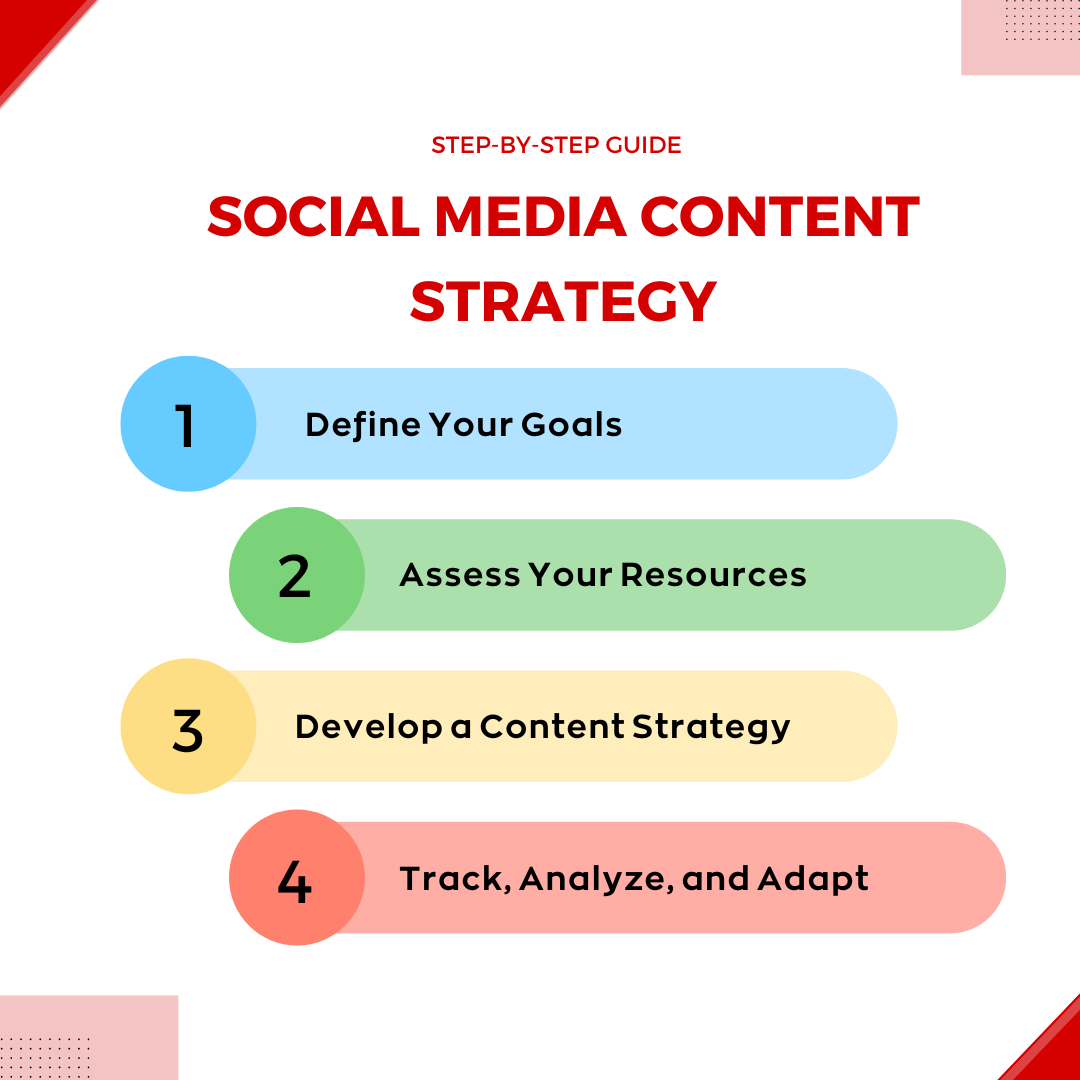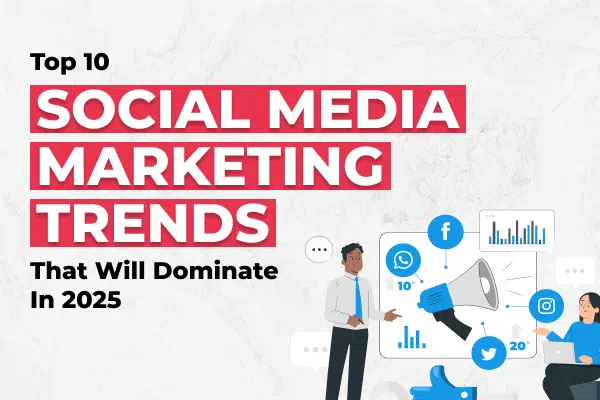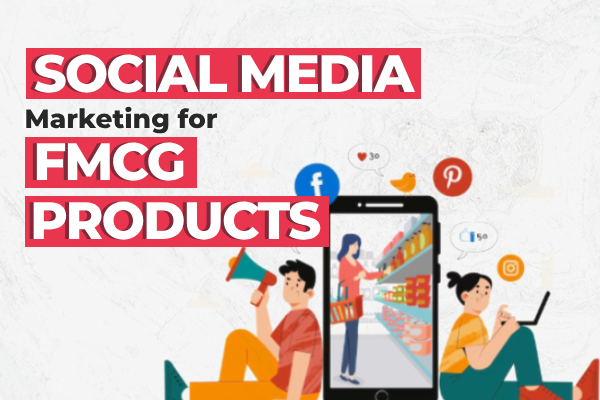Content
- Introduction
- Know Your Audience
- Understand the Platforms
- Step 1 – Define Your Goals
- Step 2 – Assess Your Resources
- Step 3 – Develop a Content Strategy
- Step 4 – Track, Analyze, and Adapt
- Essential Social Media Marketing Tips
- Conclusion
Introduction
Ever felt like you’re shouting into a void on social media?
You’re pouring your heart and soul into crafting witty captions and stunning visuals, but your engagement is flatter than a pancake.
You’re not alone!
Many businesses fall into the trap of spreading themselves thin across every social media platform, hoping something sticks.
But here’s the secret: it’s not about being everywhere – it’s about being in the right places.
Think of it like dating.
You wouldn’t propose on the first date, right? You’d take the time to get to know the person, understand their interests, and figure out if you’re a good match.
The same goes for social media.
To truly connect with your audience and achieve your marketing goals, you need to choose the platforms where they’re actually hanging out and engaging.
So, which are the best social platforms for businesses?
We’ll break down the process step-by-step, helping you identify your ideal audience, understand the unique personality of each platform, and develop a social media content strategy that sets you up for success.
Know Your Audience
Before you even think about creating a profile, you need to understand who you’re trying to reach. Who are these people you want to connect with? What makes them tick?
Who Are They?
Get up close and personal with your target audience. Think beyond basic demographics and delve into their psychographics – their values, interests, and motivations.
Demographics:
This is your starting point. Consider age, location, gender, income, education, occupation, relationship status, etc. For example, if you’re selling skateboards, your target audience might be teenagers and young adults interested in action sports.
Interests:
What are their hobbies, passions, and online behaviors? Do they follow certain influencers or engage with specific brands? Our skateboarders might be interested in music festivals, video games, and streetwear fashion.
Pain Points:
What problems can your business solve for them? Perhaps your skateboards offer superior durability or a unique design that appeals to their sense of style.
Where Do They Hang Out?
Now that you know who your audience is, it’s time to find out where they spend their time online.
Research:
Most social media platforms provide detailed demographic data about their users. Use this information to identify platforms where your target audience is most active. Social listening tools can also help you track conversations and identify trends.
Analyze Competitors:
Take a peek at your competitors’ social media presence. Which platforms are they using? Where are they seeing the most engagement? This can provide valuable insights into where your target audience is already active.
Understand the Platforms
Each social media platform has its own unique “personality” and attracts a different type of user. Let’s explore some of the most popular options:
1. Facebook
Pros
- Massive reach
- Diverse demographics
- Powerful advertising tools
- Excellent for community building
Cons
- Organic reach can be limited
- Algorithm changes can impact visibility
Ideal for Businesses
- With a broad target audience (retail chains, healthcare centres, etc.)
- Who are focused on community engagement and brand building (like local businesses, event companies, etc.)
- With a budget for paid advertising (such as eMarketplaces, real-estate, etc.)
2. Instagram
Pros
- Highly visual
- Strong focus on aesthetics
- Great for influencer marketing and brand storytelling
Cons
- Can be challenging to drive traffic outside of the platform
- Requires high-quality visuals
Ideal for Businesses
- With visually appealing products (Fashion and beauty, Restaurants and cafes, etc.)
- Who are targeting younger demographics
- Who can create engaging visual content
3. Tiktok
Pros
- Massive reach, especially among younger audiences
- Highly engaging short-form video format
Cons
- Requires creative content and a deep understanding of trends
- Can be challenging to measure ROI
Ideal for Businesses
- Who are targeting Gen Z and Millennials
- With a knack for creating entertaining and viral content
4. LinkedIn
Pros
- Professional network
- Thought leadership
- Blogs & articles promotions
- Platform for value-driven short videos
Cons
- Can be less engaging than other platforms
- Primarily for job search
- Sees less engagement than other social media apps
Ideal for Businesses
- B2B businesses
- Professional services (for example, Recruitment agencies and HR services)
- Who are looking to establish themselves as industry leaders
5. Pinterest
Pros
- Visual discovery platform
- Great for product-focused businesses
- Do-it-yourself (DIY) and inspirational guides for brand trust building
Cons
- Can be challenging to build a following
- Requires high-quality visuals
Ideal for Businesses
- Who are in the eCommerce
- Whose audience appreciate Do-it-yourself (DIY) guides
6. Reddit
Pros
- Highly engaged communities (subreddits)
- Help guides can work wonders
- Finding potential customers who are seeking answers to their questions (like Quora)
- Authentic interactions
- Potential for viral content
Cons
- Strict rules and etiquette, which limits the creative freedom
- Can be challenging to navigate and make content searchable
- Not ideal for most of the industries and brands
Ideal for Businesses
- Who are targeting specific niche interests like Gaming accessories, Specialty coffee, tea, wine, cheese, and similar brands
- Who have the time and resources to engage in authentic conversations
- Who can understand Reddit’s unique eco-system and culture
7. Snapschat
Pros
- Popular with younger demographics
- Ephemeral content creates a sense of urgency
- AR filters can be engaging
- Geo-targeted filters for foot traffic
Cons
- Reach can be limited
- Content disappears quickly
- Requires frequent updates
Ideal for Businesses
- Who are targeting Gen Z and younger Millennials
- Who are offering time-sensitive promotions
- Who are in local businesses (thanks to geo-targeted filters)
8. X (formerly Twitter
Pros
- Brands can give out real-time updates
- Excellent for news and announcements
- Strong customer service tool
Cons
- Fast-paced environment
- Can be difficult to stand out
- Character limits can be restrictive
Ideal for Businesses
- Who want to stay on top of trends (like financial advisory services and fintech apps)
- Who can engage in real-time conversations
- Who can provide quick customer support
- Who are into the news and media domain
9. YouTube
Pros
- Massive global reach
- Diverse video content formats (long-form, live streams, shorts)
- Strong potential for building brand awareness and driving engagement
Cons
- Can be time-consuming and resource-intensive to create high-quality videos
- Competition is fierce
- Requires SEO optimization for discoverability
Ideal for Businesses
- With strong visual storytelling capabilities
- Who can create engaging and informative video content
- Who are targeting a broad audience like Supply chain and logistics, Non-profits and NGOs etc.
- Who are targeting niche audience in passion projects like Pet care, Food and beverages etc.
Whew! That was quite a list!
As you can see, each social media channel has its own quirks and caters to a different crowd.
In general, these are the 5 best social media platforms for businesses:
- Tiktok
- YouTube
However, you need to decide the right platform based on your goals, audience, and available talents in your team (for video editing, copywriting, and graphic designing).
Let’s jump onto the step-by-step guide on how to find crafting the most ROI-driven social media content strategy for your business.

Step 1 – Define Your Goals
What do you hope to achieve with your social media presence?
Having a clear answer to the above question is crucial because your goals will influence your platform choices, and your overall strategy.
What Do You Want to Achieve?
Be specific and realistic with your goals. Here are some common objectives:
Brand Awareness:
Increase visibility and reach. Get your brand in front of as many people as possible.
Lead Generation:
Capture contact information and nurture prospects. Use social media to drive leads to your website or landing pages.
Sales:
Drive direct purchases through social commerce. Use platforms with built-in shopping features to sell products directly.
Customer Service:
Provide support and build relationships. Use social media as a channel for customer service and communication.
Community Building:
Foster a loyal following and encourage interaction. Create a space where your audience can connect with your brand and with each other.
Step 2 – Assess Your Resources
Social media marketing requires an investment of time and resources. Be realistic about what you can commit.
Resource 1: Time Commitment
Content Creation:
How much time can you dedicate to creating high-quality content? Consider the time it takes to plan, create, and schedule posts.
Community Management:
Don’t forget about the ongoing time commitment of engaging with your audience. This includes responding to comments, answering questions, and participating in conversations.
Resource 2: Budget
Organic vs. Paid:
Organic reach (unpaid) can be limited on some platforms. Consider whether you have the budget for paid advertising to boost your visibility.
Content Creation Tools:
Do you need to invest in design software, video editing tools, or other resources to create high-quality content?
Step 3 – Develop a Content Strategy
A strong content strategy is essential for social media success.
Strategy 1: Content Pillars
Identify Key Themes:
What topics will you focus on? Your content pillars should align with your brand, your audience’s interests, and the best practices of each platform. For example, a sustainable clothing brand might focus on ethical fashion, environmentalism, and style tips.
Content Formats:
Diversify your content with a mix of videos, images, text posts, stories, live streams, etc. Each platform has its own strengths and preferred formats.
Strategy 2: Content Calendar
Plan and Schedule:
A content calendar helps you stay organized and maintain consistency. Plan your posts in advance and use scheduling tools to automate the process.
Step 4 – Track, Analyze, and Adapt
Social media marketing is an ongoing process. It’s crucial to track your results, analyze your performance, and adapt your strategy accordingly.
Here is the checklist of the things you need to gauge and measure:
1: Analyze Key Metrics
Engagement:
Track likes, comments, shares, and clicks to measure how your audience is interacting with your content.
Reach:
How many people are seeing your content? Monitor your reach to understand the size of your audience.
Website Traffic (from Social Media):
If your goal is to drive traffic to your website, track referrals from social media to measure your success. Use the “Acquisition” section of Google Analytics to see how much traffic is coming.
Conversions:
Ultimately, you want your social media efforts to translate into tangible results. Set up goals and conversion tracking in Google Analytics to measure how effectively your social media efforts are driving desired actions on your website (e.g., form submissions, purchases, sign-ups).
2: Use Social Listening Tools
Monitor Brand Mentions:
Use social listening tools, like Sprout Social, Hootsuite, BuzzSumo, etc., to track conversations about your brand and identify any potential issues or opportunities.
Identify Trends:
Stay ahead of the curve by monitoring industry trends and adapting your content strategy accordingly. BuzzSumo also helps here by tracking for you by identifying trending topics and formats specifically for your industry domain.
Additionally, find influencers who are talking about trending topics. Collab with them if a significant number of their followers are among your target audience.
One more tip: Track brand mentions of your good-performing competitors and see what people are saying about them.
Essential Social Media Marketing Tips
Based on the ideas shared in this blog, below are enlisted the expert social media marketing tips for businesses:
- Prioritize Quality Over Quantity: Focus on creating valuable content that resonates with your audience.
- Be Consistent: Regularly post and engage with your followers to stay top-of-mind.
- Visuals Are King: Use high-quality images and videos to capture attention.
- Embrace Storytelling: Connect with your audience on an emotional level by sharing stories that resonate.
- Don’t Neglect Community Management: Respond to comments, answer questions, and foster relationships with your followers.
- Run Contests and Giveaways: Boost engagement and attract new followers with interactive contests and giveaways.
- Use Relevant Hashtags: Increase discoverability and reach by using relevant hashtags.
- Track Your Results and Adjust: Continuously analyze your performance and adapt your strategy based on what’s working.
Conclusion
We hope that the feeling of shouting into the void with low-engagement posts and videos becomes a distant dream for you. The social media marketing tips shared in this blogpost will help you create the perfect content calendar for 2025.
Moreover, the blogpost has answered how to:
- Identify your target audience
- Understand the strengths of each social media platform
- Define business goals and develop a social media content strategy that aligns with them
But this is just the beginning. This blog space will expand on these ideas and we will come up with further updates (on trends, success stories, etc.) in the coming months.
If you’re finding it difficult to devise the perfect content planner for 2025, and do not have enough time and resources to execute them, then we have the right team for you.
Contact us today for audience analysis, content creation (including videos), SEO services, and advertising solutions today!



















